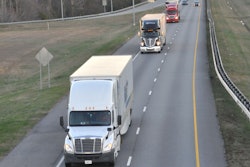
With a proposed rule to mandate the use of speed limiters on heavy trucks looming in the coming months, two of the trucking industry’s biggest lobbying groups reiterated last week their stances on the rulemaking.
The American Trucking Associations and the Owner-Operator Independent Drivers Association, both of which separately sent letters to the Department of Transportation about the issue last week, stand on opposite sides of speed limiters. ATA favors a rule to require speed limiters on all trucks weighing more than 26,000 pounds, citing safety as its primary reason. It hopes to see trucks governed to 65 mph or less.
OOIDA, however, says speed limiters will hurt highway safety, rather than help. “A speed limiter mandate will result in cars and trucks operating at different speeds on the highways,” OOIDA said in its letter. “When cars and trucks operate at different speeds on the highway, there is a significant negative impact on safety. Traffic is more dynamic and less predictable. Accidents increase. Your agencies must ensure you do not produce a mandate that will arbitrarily add dangerous car-truck speed differentials to our nation’s highways.”
ATA, however, called the regulation “common sense,” telling the DOT the rule is past due.

“In 2006, as part of our longstanding commitment to highway safety, ATA petitioned the National Highway Traffic Safety Administration and the Federal Motor Carrier Safety Administration to require the speed limiter on all large trucks be set in order to electronically limit their top speed to no more than 65 miles per hour,” ATA President and CEO Bill Graves said. “We waited patiently until the government finally said in January 2011 they would move ahead with a speed limiter mandate, but this common sense regulation has been mired in bureaucracy for over four years now. It is long past time for NHTSA and FMCSA to move ahead with this rule.”
ATA says slowing trucks down will reduce the frequency and severity of crashes. They do, however, also support a national speed limit of 65 miles per hour for cars.
“In addition to slowing truck speeds, ATA believes in slowing down all traffic,” Graves said. “That’s why we back a national speed limit for all vehicles of 65 miles per hour and are disturbed by the recent trend of states raising their speed limits to 70, 75, 80 or in some areas even 85 miles per hour. These limits are reckless and are needlessly endangering millions of motorists.”
The debate has been spurred on recently by states increasing their speed limits. South Dakota recently pushed its speed limit to 80 miles per hour, while Texas is alone at the top with speed limits on some highways up to 85 miles per hour.
OOIDA said many states have eliminated car-truck speed limit differentials over the last 15 years because it’s safer for cars and trucks to travel at a more uniform speed.
“A major reason our Interstate system is the safest part of our highway system – despite the fact that it generally permits the fastest speeds of any roads – is that vehicles of all types generally move at a relatively uniform speed,” the organization said in its letter. “Interactions between those vehicles, such as overtaking and passing, are minimized, and the opportunities for crashes to occur are reduced.
Some drivers have recently chimed in on the debate as well, and several Overdrive readers said their trucks are either already limited, or they choose to go between 65 and 70 miles per hour to increase fuel efficiency.
A proposed rule is expected to be published in the Federal Register on July 27.










